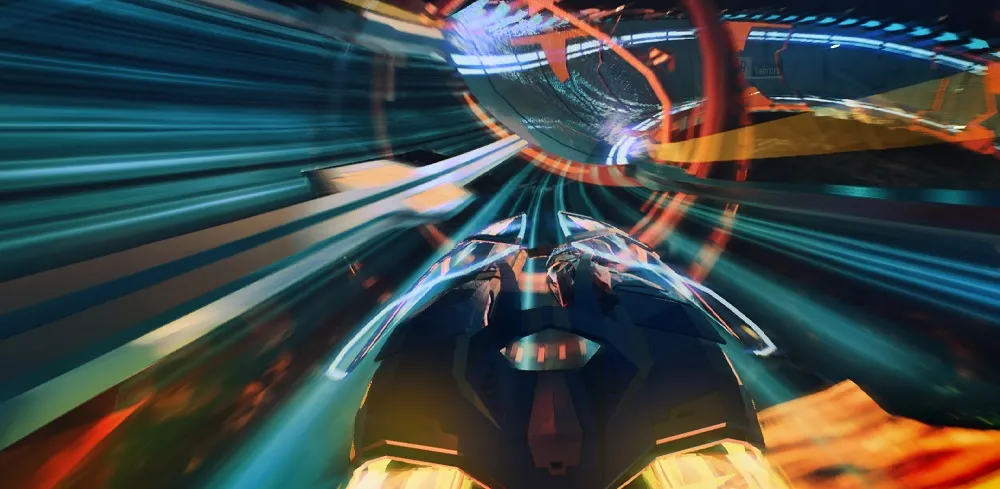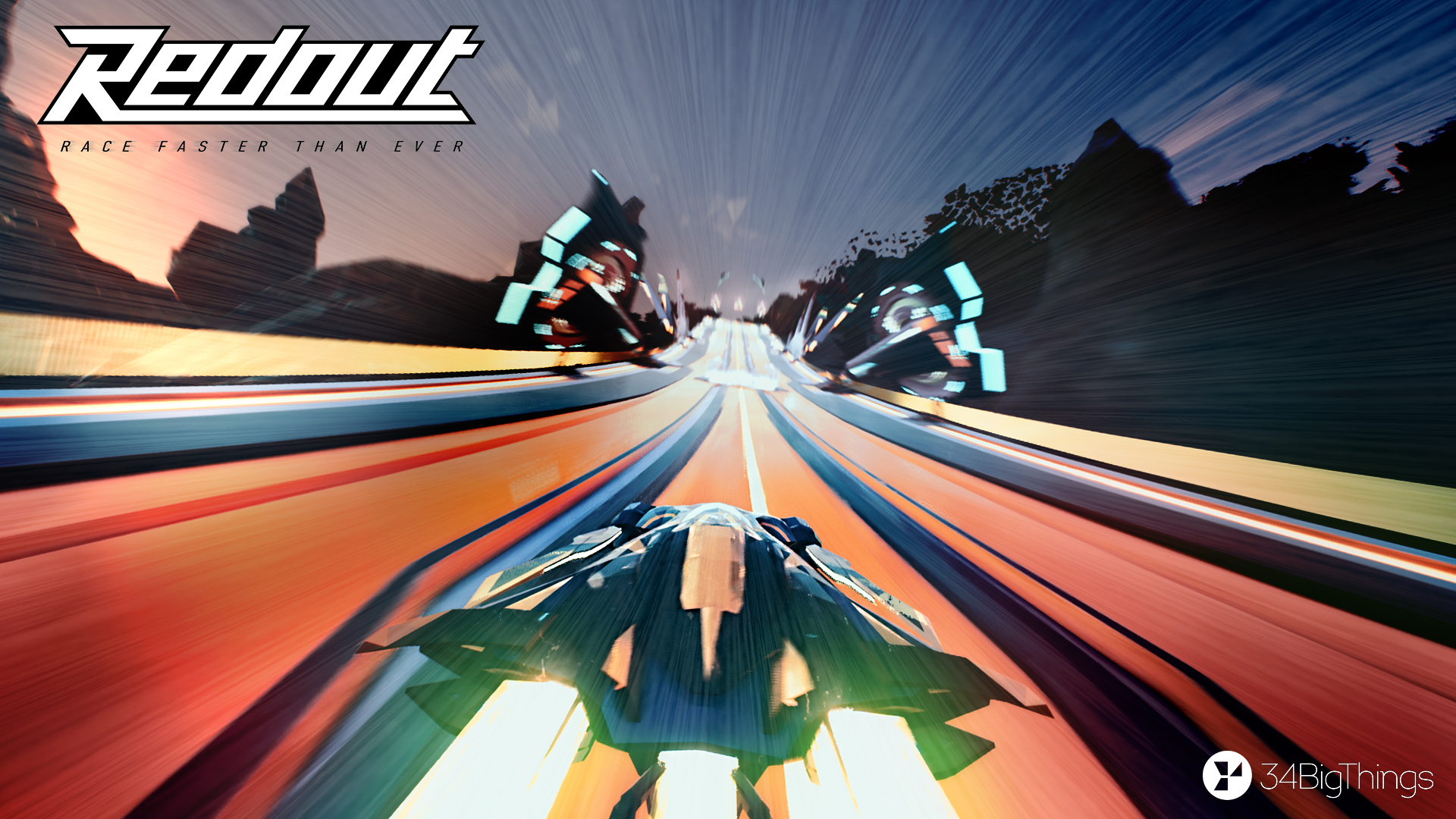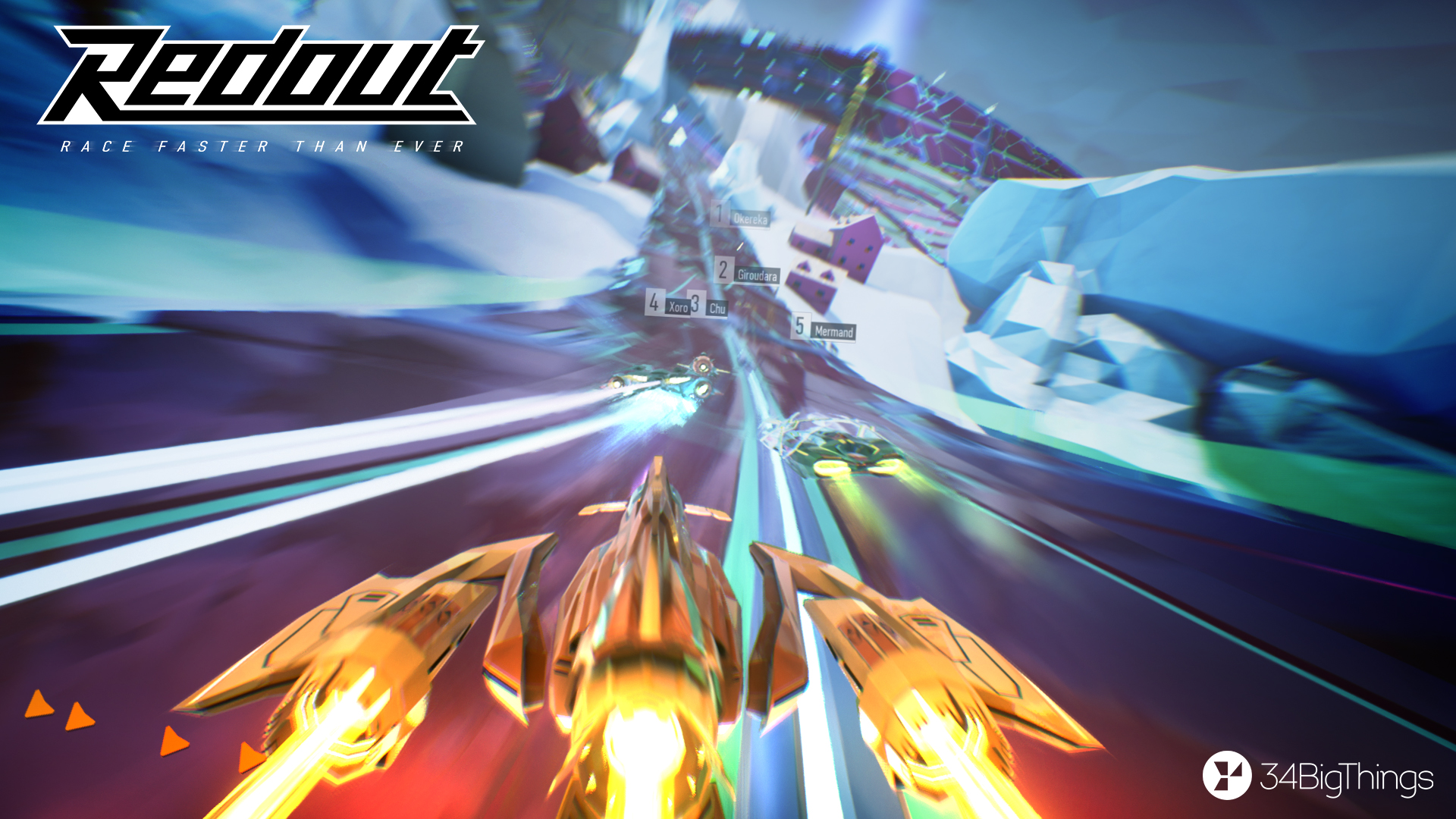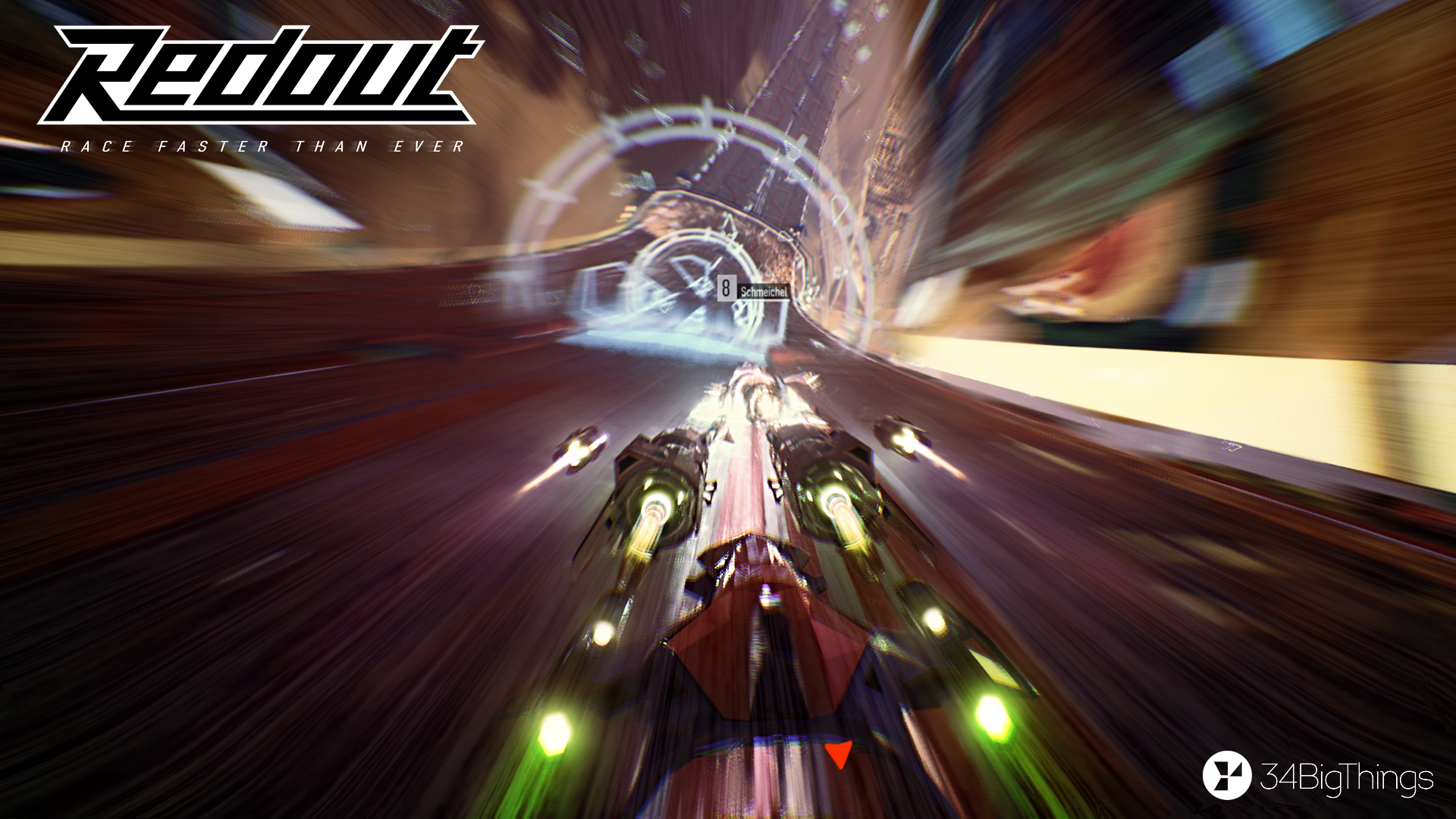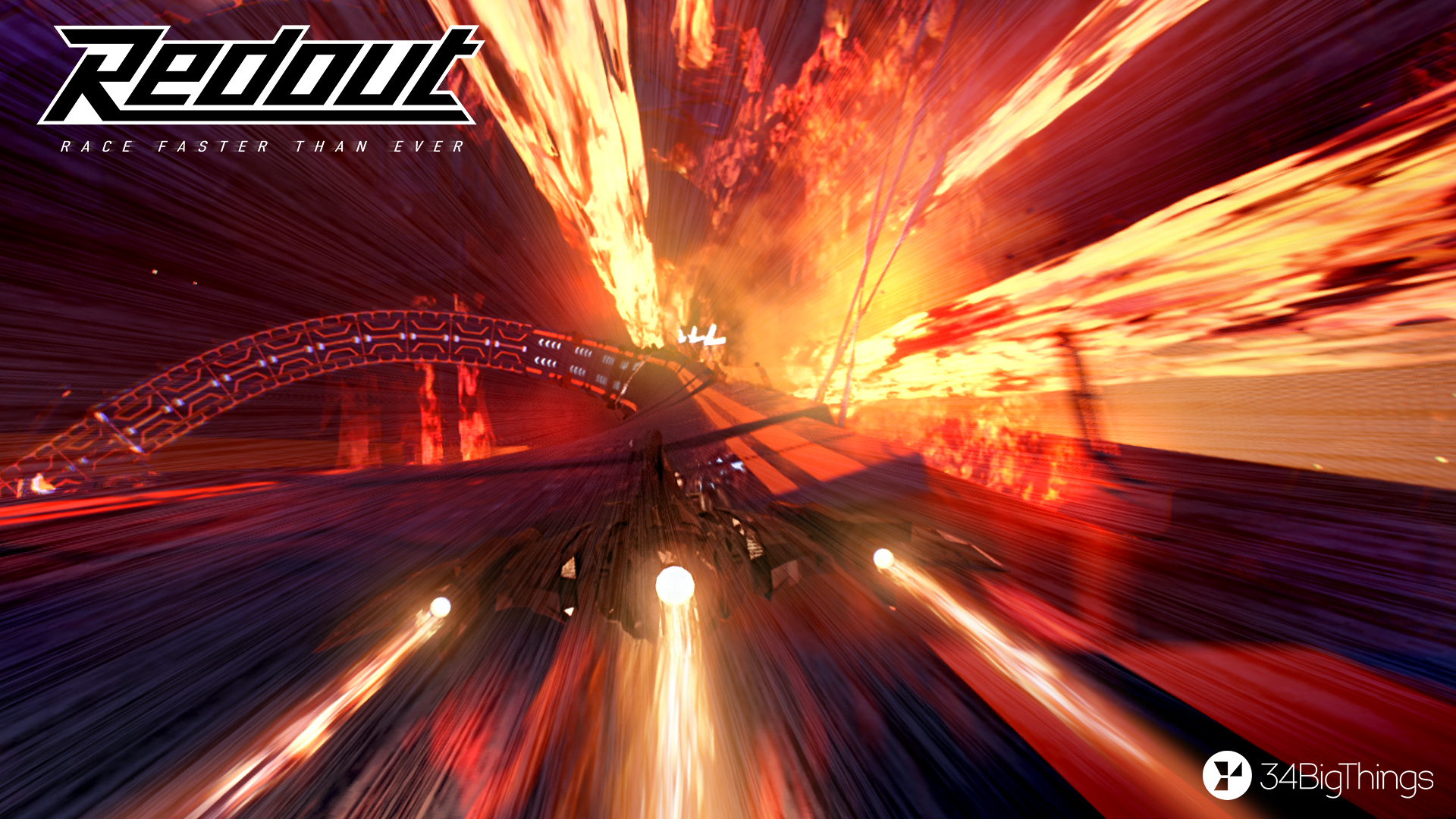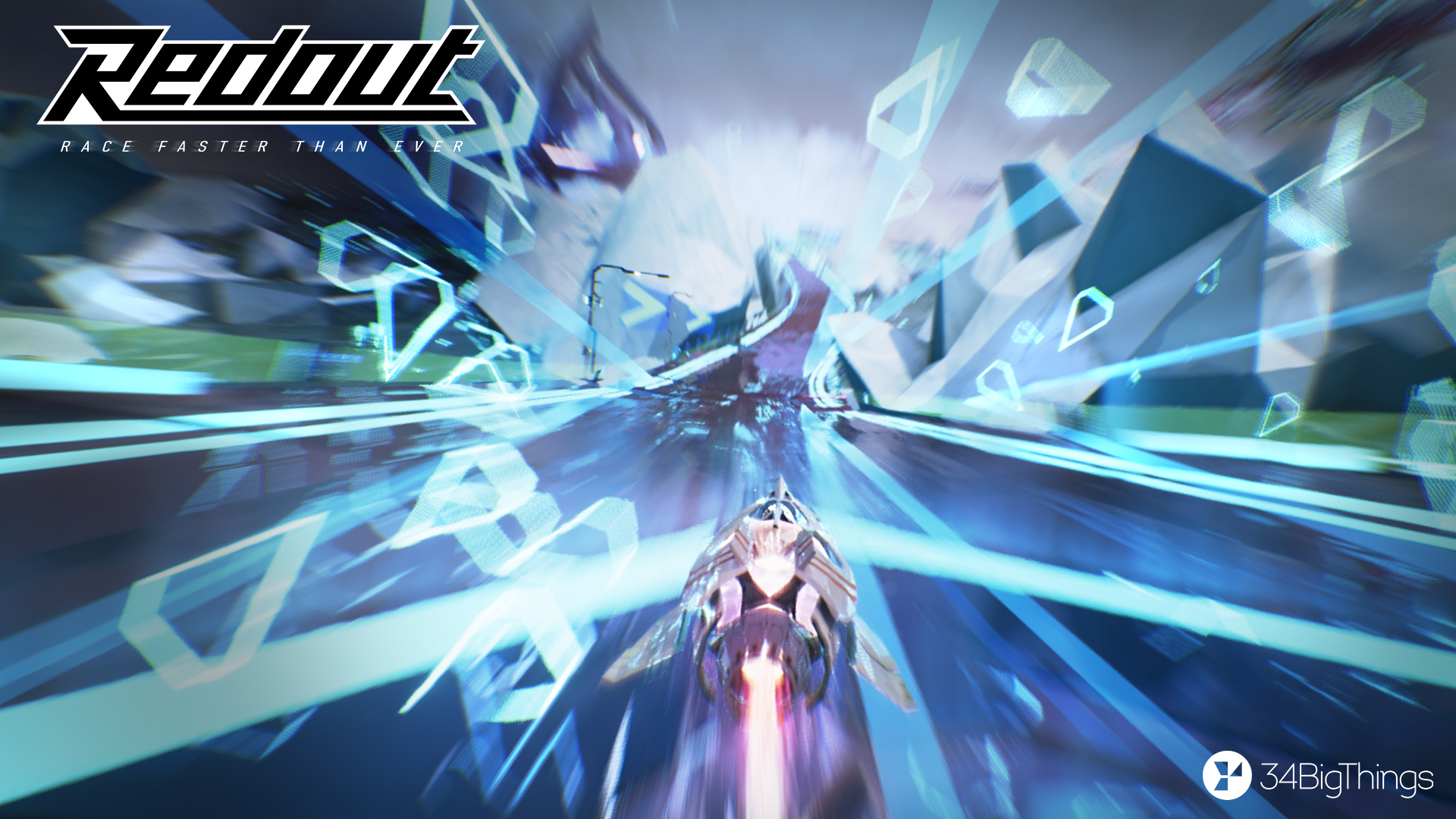Throughout the history of Sony’s PlayStation system, one game more than any other has been synonymous with why I personally love video games: Wipeout. Not the awful game show, but the brilliant, blisteringly fast, and gorgeous hovercraft racing game. Wipeout defined the power of the next generation when the original PlayStation launched. It took classics like Nintendo’s F-Zero and amped them to the extreme.
Wipeout was brutally hard and utterly satisfying. It’s also been a mainstay on Sony’s platforms right up until the PlayStation 4, where the series remains absent. A lot of fans have been annoyed by this, but thanks to developer 34BigThings, there’s finally a viable alternate solution. Redout is a blatant recreation of Wipeout, but unlike most attempts to recreate the game, this one manages to succeed on almost all fronts and it features great VR integration for both the Oculus Rift and HTC Vive on Steam.
Redout’s visual style is the first thing that hits you. It’s close to Wipeout, but more surreal with an intentional lower polygon look to the ships. Everything has a slight cell-shaded quality to it, so it almost looks cartoonish. The game is gorgeous from top to bottom. The colors are bright neon, the track scenery is detailed and impressive, and the ships are a diverse group of sci-fi cool.
When you get to playing, the sense of speed is striking. For better or worse, Redout doesn’t ease you into anything. It’s brutal from the start. Unlike, say, Mario Kart, where you start in lower speed leagues, Redout has no difficulty levels really. It just is what it is. The speed factor starts out at insane and maintains that through the 80 levels of the campaign. It’s hard to describe just how insanely fast the game is when you’re at top speed.
The landscape goes zooming by purely as a blur and maintaining control has a hypnotic effect. That speed combined with the difficulty level of both the tracks and, especially, the AI-controlled racers is a double-edged sword. I’ve been playing these kinds of racers for decades and still had trouble nailing perfect track runs. Newcomers to the genre will likely get frustrated early and often.
The AI is especially overdone. They do perfect runs, couldn’t care less about bashing you out of the way, and just feel robotic. 34BigThings has said much the same thing and ensures players they are adding some fixes in an upcoming patch, but as it stands now, the game is made overly hard by poorly balanced opponents.
Unlike Wipeout, there are no actual weapon or track power-ups in Redout. The tracks have turbo boosts and you can upgrade your prefered craft between races with active and passive abilities, and new parts (like better engines.) Passive power-ups can provide more grip, speed, and control. Active upgrades let you produce an EMP burst that briefly stifles any nearby racers or unleashes an energy suck that will leech energy from opponents. But you won’t be launching any missiles here.
These extra abilities add an interesting dynamic to the game. They can give you a slight advantage–and you’ll need it–but they’re no substitute for actual driving skill. The only thing that really gives a player an advantage over others (or the AI) is practice. Redout’s controls are very close to Wipeout’s, and learning to use the left and right strafing and proper pitch control is vital. The feel of the physics is refined enough that there’s a palpable sense of defying gravity.
The ships bob up and down and you’ll need to remember to keep the nose up when going up inclines. Failure to do so causes friction between your ship and the track, which leads to damage and lower speeds. You’ll want a control pad for Redout as well, as it provides a much better controlled experience than the keyboard.
There is no motion controller support for Redout as the VR integration is mostly of the “you-are-there first person” viewpoint way, as opposed to a motion-tracking full-on VR experience. But that’s to be expected from most racing games. There is no fully modeled cockpit at all here either, as you just cycle through a few different camera angles with varying degrees of closeness to your ship. The HUD floats in front of your vision, making sure you can track your energy, health, and race position at all times.
Most people probably don’t consider the longevity of racing games, but the good ones can be lengthy time sucks. Redout will potentially make 20 or so hours of your life disappear down a hazy, speed-induced vortex to complete and unlock everything. There are ten game modes, ranging from the usual racing, “pure” racing (no power-ups allowed), time trial, survival mode, last man standing, and more. Most intriguing is the boss mode with brilliantly manages to tie all five tracks in a tier together (via portals) to make one massive race.
There’s also online play for when you get sick of the AI, but thus far, I’ve found it to be rather unpopulated. Hopefully that will change as word of mouth gets out about the game.
Redout might not be a banner VR game, but the ability to experience the absurd speeds up close and personal is a welcome feature. Largely, Redout is just a fantastic example of its genre — both in and out of VR. It’s so close to being the game it’s mirroring that if you just slapped the Wipeout label on, most of us wouldn’t even blink. It’s one of the best sci-fi racing games in VR we’ve seen thus far — Radial-G and Bank Limit included — and we’ve got our fingers crossed for a PS VR port.
Do you agree with this review? Let us know in the comments below! Or you can check out these official review guidelines to find out more about our process.

